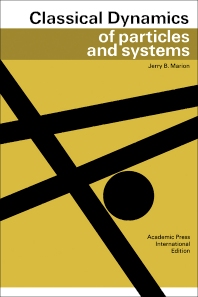Books in Physics
Books in Physics
Physics titles offer comprehensive research and advancements across the fundamental and applied areas of physical science. From quantum mechanics and particle physics to astrophysics and materials science, these titles drive innovation and deepen understanding of the principles governing the universe. Essential for researchers, educators, and students, this collection supports scientific progress and practical applications across a diverse range of physics disciplines.
- 1st Edition
- October 22, 2013
- Margaret Morris
- English
- Paperback9 7 8 1 4 8 3 2 0 8 8 6 2
- Hardback9 7 8 1 4 8 3 1 9 7 2 6 5
- eBook9 7 8 1 4 8 3 2 2 2 2 9 5

Basic Physical Training
- 1st Edition
- October 22, 2013
- John W. Evans
- English
- Hardback9 7 8 1 4 8 3 2 2 8 7 2 3
- Paperback9 7 8 1 4 8 3 2 5 1 9 7 4
- eBook9 7 8 1 4 8 3 2 6 6 3 8 1

The Solar Corona
- 2nd Edition
- October 22, 2013
- Sina Ebnesajjad + 1 more
- English
- Hardback9 7 8 0 3 2 3 2 6 4 3 5 8
- eBook9 7 8 0 3 2 3 2 6 5 0 4 1

Surface Treatment of Materials for Adhesive Bonding
- 1st Edition
- October 22, 2013
- Jerry B. Marion
- English
- Paperback9 7 8 1 4 8 3 2 5 6 7 6 4
- eBook9 7 8 1 4 8 3 2 7 2 8 1 8

Classical Dynamics of Particles and Systems
- 1st Edition
- October 22, 2013
- Ishwar D. Aggarwal + 1 more
- English
- Paperback9 7 8 1 4 8 3 2 3 5 3 3 2
- Hardback9 7 8 0 1 2 0 4 4 5 0 5 9
- eBook9 7 8 1 4 8 3 2 5 9 3 0 7

Fluoride Glass Fiber Optics
- 1st Edition
- October 22, 2013
- Frank J. Tipler
- English
- Paperback9 7 8 1 4 8 3 2 4 7 5 3 3
- Hardback9 7 8 0 1 2 6 9 1 3 8 0 4
- eBook9 7 8 1 4 8 3 2 7 3 6 2 4

Essays in General Relativity
- 1st Edition
- October 22, 2013
- J. A. Bittencourt
- English
- Paperback9 7 8 0 0 8 0 3 3 9 2 3 8
- eBook9 7 8 1 4 8 3 2 9 3 1 9 6

Fundamentals of Plasma Physics
- 1st Edition
- October 22, 2013
- J.E. Bridges + 2 more
- English
- Paperback9 7 8 1 4 8 3 1 2 9 7 8 5
- Hardback9 7 8 0 0 8 0 2 5 3 9 9 2
- eBook9 7 8 1 4 8 3 1 6 2 2 0 1

Electrical Shock Safety Criteria
- 1st Edition
- October 22, 2013
- Leo Young
- English
- Paperback9 7 8 1 4 8 3 2 1 1 0 5 3
- Hardback9 7 8 1 4 8 3 1 9 9 4 5 0
- eBook9 7 8 1 4 8 3 2 2 4 4 8 0

Advances in Microwaves
- 1st Edition
- October 22, 2013
- Karl F. Herzfeld + 1 more
- H. S. W. Massey + 1 more
- English
- Hardback9 7 8 1 4 8 3 2 3 0 5 7 3
- Paperback9 7 8 1 4 8 3 2 5 3 8 2 4
- eBook9 7 8 1 4 8 3 2 7 5 7 0 3

Absorption and Dispersion of Ultrasonic Waves